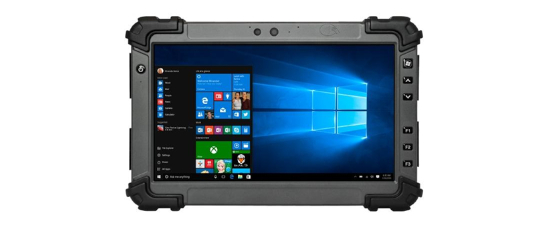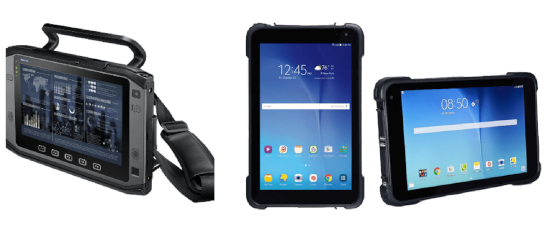AMRs and AGVs: The Game Changer!.
Date Published: 02-09-2021
Ever since Henry Ford revolutionized the automotive manufacturing environment in the early 1900s by creating the assembly line process, manufacturers of a host of different industries have adopted the ‘production line’ process, setting off a whole industry that has focused on tweaking, improving, and finding more efficient ways of producing their goods.
While many of the improvements that have been created over the last century have made differences in the production environment, at times these differences have been incremental and small. Often, many of these improvements have even been ignored by many in industry for the simple fact that they didn’t warrant any attention because they were difficult to justify as a return on investment.
Now and then, a game-changer comes along! Something that provides such an advantage, that everyone takes note, and then implements.
As we move into an increasingly more data-driven manufacturing environment! Thanks to the fourth industrial revolution! Automated Guided Vehicles, AGVs, and automated Mobile Robots, or AMRs, are the next major leap in the production environment that simply can't be ignored.
Admittedly, while there was a lot of excitement at the initial concept of AGVs when the first clumsy prototypes made their way out into the world and onto production environments, these early models did little to live up to the hype! Fast forward a few necessary steps in technological development and processing speed, and all of a sudden, we now have the game-changer that many originally envisioned.
AGVs and the latest iteration, AMRs, are now fully automated, completely independent, and truly safe!
While consumers may still dream of driverless vehicles sometime in the future, AGVs and AMRs are already being used to improve manufacturing efficiency, flexibility, and production flow.
What are the options?
At present, there are a few dominant technologies that have taken root in providing the best option for an AMR or AGV, in any particular environment.
The first of these is magnetic navigation. This technology requires the use of magnetic strips to be placed on the shop floor, to direct the traffic flow of the AGV. Ensuring they arrive at their envisioned destination while still allowing the AGV to detect through sensors any objects that may be in their predetermined path and either slow down or stop accordingly.
A slight variation on the above technology has been the use of QR Codes, or Quick Response codes that is placed along the various paths the AGV will travel. Letting, the unit to determine where it is about its environment, as well as give the unit potential options from that point to fulfil its particular function. These strategically placed QR codes, are less invasive than magnetic tape options and effectively act as a railway junction allowing the unit to take various paths from that point forward, permitting the unit to select the best option at that junction for the unit to execute what it has been commanded to do.
The third technology makes use of laser-guided navigation, which provides the AGV with the means to ascertain its position through a triangulation algorithm as the unit bounces light over reflectors placed in its environment, specifically for that use. By implementing LIDAR technologies, the unit determines ranges and variable distances by targeting an object with a laser and measuring the time for the reflected light to return to a receiver, much as a submarine uses sonar.
Another option is the vision-guided AMRs and AGVs that have sensors installed for the specific purpose of navigation. These units constantly scan the areas around themselves and navigate through the shop floor after effectively building their particular 3D map of their environment, in the pursuit of executing their given tasks. In computational geometry and robotics, this technology is known as SLAM or Simultaneous Localization and Mapping.
Interestingly, true AMRs, being the more advanced option of the two, only use this SLAM-based technology, while AGVs, being a more generic term, can use any of the above technologies.
Each of these technologies has its various advantages and disadvantages. All of which would need to be taken into consideration for each different manufacturing environment. The exciting fact is that the level of technology required to make each option truly effective has been reached, giving each of these options the real potential to excel!
Where can it be implemented?
Of course, the question remains, where can AMRs or AGVs be implemented? How can they benefit you?
Thanks to the maturation of technologies required to make each of the above options effective, AMRs or AGVs are available in various shapes, sizes and with an array of options and accessories. As a result, AMRs and AGVs are amazingly effective for the following applications:
- Work-in-process movement
- Production parts delivery
- Pallet handling
- Finished goods handling
- Trailer loading
Given the AMRs and AGV's ability to link directly to your ERP or MES system, it is now possible to accurately have a synchronized and made-to-order, just-in-time production facility, with all the correct, real-time data at your fingertips for the first time!
In addition to all the clear-cut advantages, AMRS and AGVs have over traditional goods movement in pre-Covid times. Their ability to ensure social distancing and diminish plant cross-contamination. Adds an extra bow to their already formidable quiver of advantages.
Who offers this opportunity?
S4 is continuing to build on its over 25 years of automation expertise and experience, has partnered with some of the world’s leading AMR and AGV brands. To offer a jam-packed mix of technologies available for AGVs to meet the demands of modern world-class manufacturing facilities. All around the globe.
Contact us to see how and where this game-changing revolutionary device can take your manufacturing facility to the next level!



